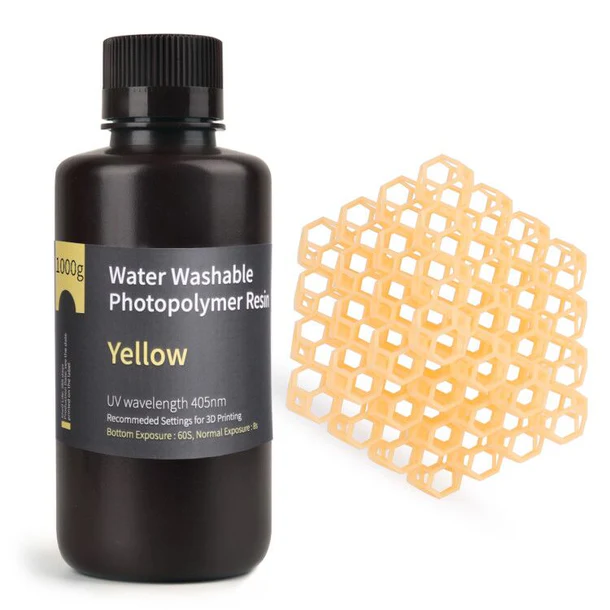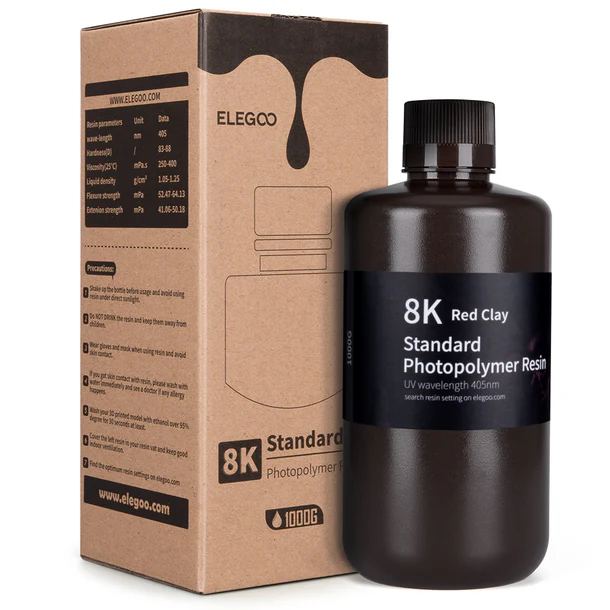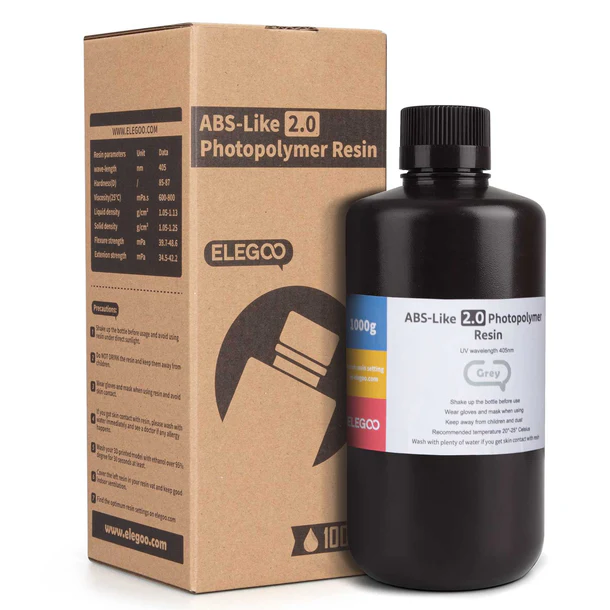Different Types of Resin for 3D Printing
- Scarlet
- Oct 15, 2024
- 5 min read
If you work in product manufacturing, crafting, or are involved in 3D printing projects, you’ve probably heard about resins and their multiple applications. With so many options available on the market, it can be a challenge to understand the differences between types of resin and which one is most suitable for your project. In this post, we will explore the main types of resin, their characteristics, and where each can be applied.
Resin is a versatile substance used across various sectors. Generally, resins have a non-crystalline appearance, are viscous, and are insoluble in water. They can be transparent or translucent and soluble in solvents like alcohol and ether.

Clear Resin being poured into the vat
Fast-Curing Resin: UV Technology
UV resin, or ultraviolet resin, is a synthetic material known for its rapid curing when exposed to UV light. Composed of liquid monomers, it undergoes a chemical reaction called polymerization upon UV light contact, forming a solid structure within seconds. This resin is widely used in applications that demand intricate detailing and quick drying.
Applications of UV Resin:
Crafting and Jewelry: Widely used for creating custom jewelry and decorative pieces due to its smooth and transparent finish.
Prototyping: Excellent for creating quick prototypes with precise details.
Repairs: Used for repairing glass, plastic, and ceramics due to its adhesive properties.
3D Printing: UV resin is also extensively used in resin 3D printers to print complex models, such as characters from anime, games, and movies, from STL files. This technology offers high quality and detailed prints.
ELEGOO resin (https://us.elegoo.com/)
Types of UV Resin
Standard Resin
Standard resin is the most widely used material for resin 3D printing and is a predominant choice among users due to its versatility. Featuring a viscosity ranging from low to medium, it excels in providing high print quality, allowing for the production of models with intricate details and high precision. Its ability to capture intricate elements in projects makes it ideal for a wide range of applications, from prototypes to decorative or functional pieces.
Standard 2.0/+ Resin
Standard 2.0 resin is an enhanced version of standard resin, known for its superior durability and increased strength, making it ideal for parts that need to withstand more tension and impact. Additionally, Standard 2.0 resin offers a smooth and precise finish, perfect for prints that demand high definition, while standard resin is easier to print and provides a matte finish.
Clear Resin
Producing 3D printed parts with transparency can be quite challenging. With this type of resin, it is possible to create clear and translucent 3D prints, ideal for creating prototypes that highlight internal cavities and subtle details. Examples of applications include LED casings, simulation of elements like water or fire, and various artistic creations that benefit from the use of clear resin.
Vegetable/Plant-Based Resin
Unlike conventional resins or ABS-type resins that have a strong odor, plant-based resins are made from soybean extracts or other biological sources. They are highly valued for being more sustainable and easy to handle, offering an environmentally friendly option.
Water-Washable Resin
Water-washable resin is an innovation that simplifies the cleaning of 3D printed parts. Traditionally, it is necessary to use isopropyl alcohol (IPA) in concentrations of 90% or more to clean printed parts, which can become costly due to the need for fresh solvent for each print. With water-washable resin, the cleaning process is streamlined as water replaces IPA, eliminating the need for large volumes of solvents. This provides a more practical and economical solution for those working with 3D printing.
ABS-Like Resin
Designed to withstand high tension and stress, this resin possesses mechanical properties that can rival industrial-grade plastics. Balancing strength and flexibility, the resistant resin is an excellent choice for prototypes and functional assemblies that undergo short periods of mechanical stress, making it ideal for wearables, gadgets, and other objects subject to wear.
Nylon Resin
Nylon resin stands out for its high tensile and impact resistance, making it ideal for parts subjected to mechanical stress, such as gears and structural components. It is also durable under adverse conditions, with high resistance to heat and chemicals, maintaining its integrity in hot and corrosive environments. Furthermore, its dimensional stability and low moisture absorption ensure that nylon parts retain their shape. Its lubricity and low friction make it valuable for moving parts, such as bearings and bushings.
8K Resin
8K Resin and Ultra 8K Resin are designed for use in 3D resin printers with 8K and Ultra 8K technology. These resins allow for capturing ultra-fine details in printed models, taking advantage of the high resolution of these printers to achieve an exceptional level of precision.
14K Resin
14K high-resolution resins are designed to offer exceptionally fine print details, achieved through a combination of advanced material science and precise manufacturing processes. These resins are composed of refined polymers with uniform particle size and consistent molecular weight distribution, ensuring smooth flow and minimizing defects in printed objects. Manufactured with cutting-edge techniques, they maintain uniform diameter and consistent quality, which is crucial for achieving high-resolution capabilities. The result is prints with unmatched detail and precision, ideal for intricate designs. Additionally, these resins provide a superior matte finish, reducing the need for post-processing and enhancing the overall aesthetics of the final product. Despite their fine resolution, 14K resins do not compromise on durability, being robust and suitable for functional applications.
Fast Resin
Speed is becoming increasingly essential in the world of 3D printing. Users want to accelerate the prototyping process to test and refine their designs, while hobbyists seek faster prints to efficiently complete their projects. High-speed resins play a significant role in this context, typically featuring low viscosity, which allows for quicker curing times. This ensures a smooth material flow during the printing process and reduces exposure and curing time, thereby increasing the overall speed of resin printing.
Resin 3D printer working/ Resin-printed model
Choosing the Ideal Resin for 3D Printing: Tips and Considerations
When working with 3D printing, understanding the different resin options available is essential to ensure that the chosen material meets the needs of your project. Each type of resin offers specific advantages, whether it be durability, precision, ease of use, or sustainability. Making the right choice can make all the difference, whether in creating functional prototypes, detailed artistic pieces, or even in industrial-scale production. With so many options on the market, taking the time to analyze the characteristics of each resin is the first step toward achieving exceptional results in your 3D prints.
That's all for now, everyone! I hope you enjoyed learning about resins in this article! I'll see you in the next post. Take care and bye bye~~








Comments